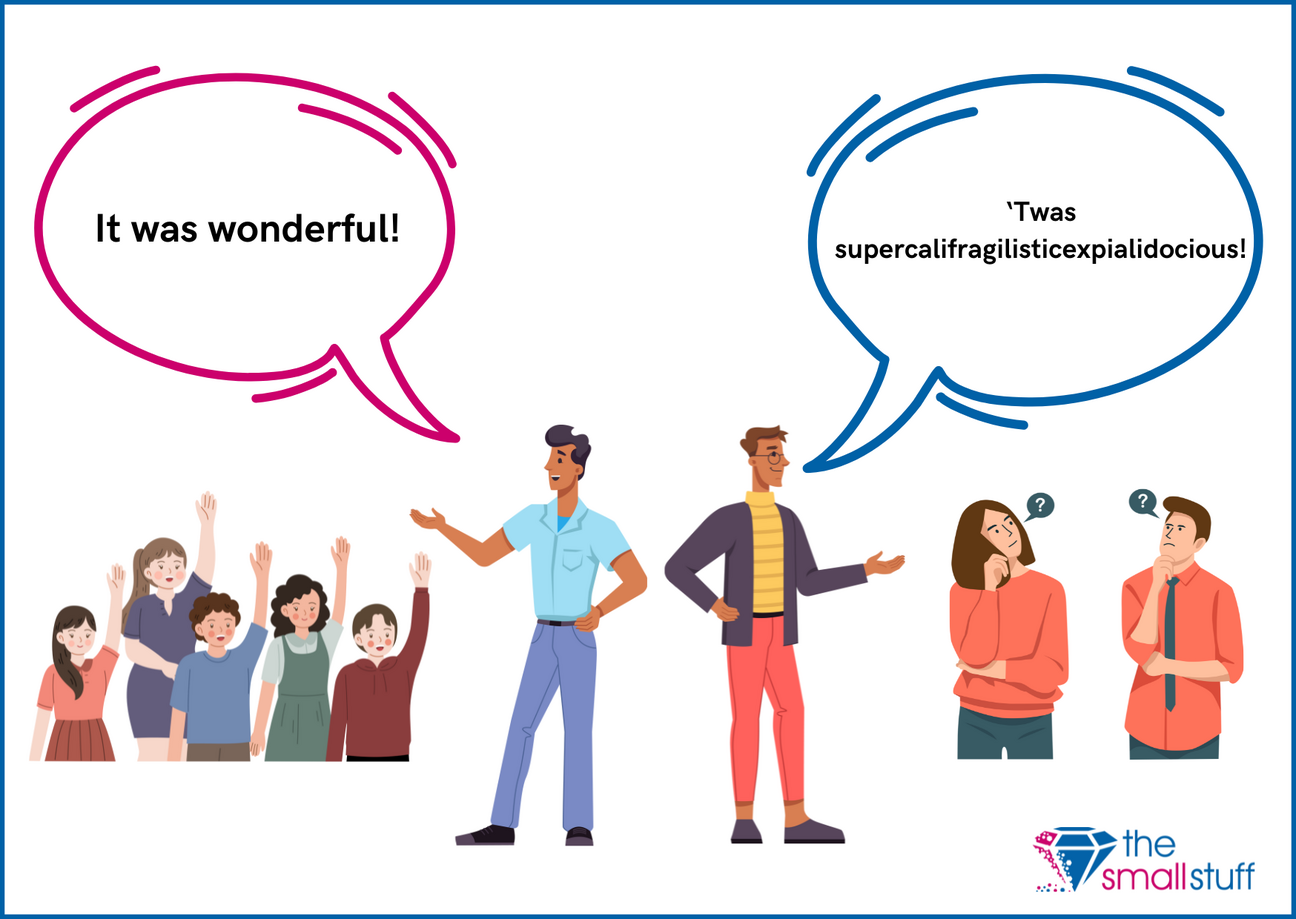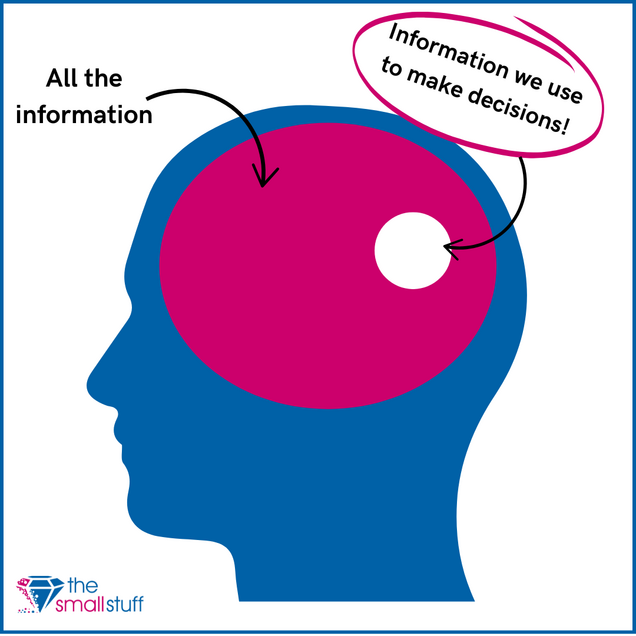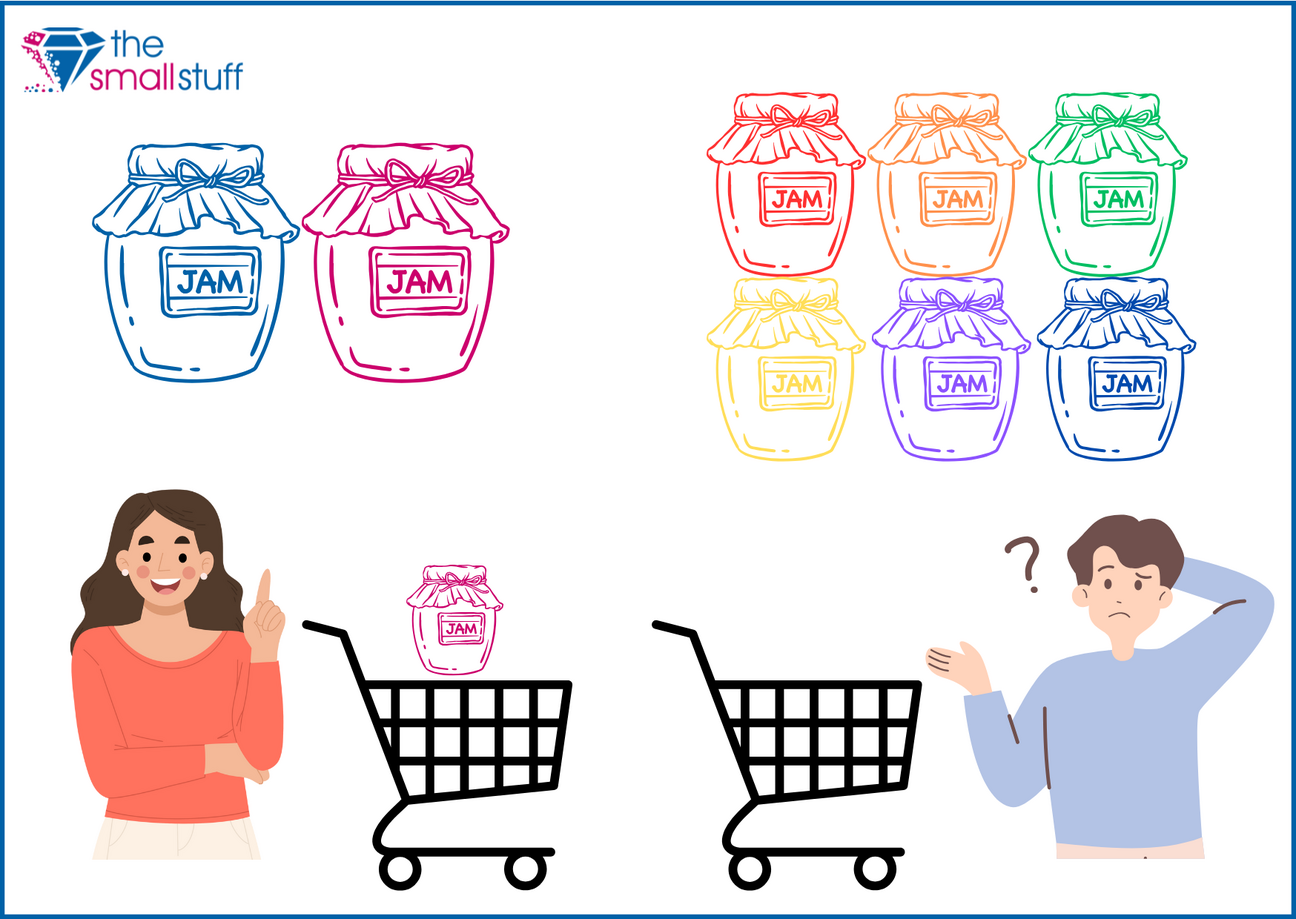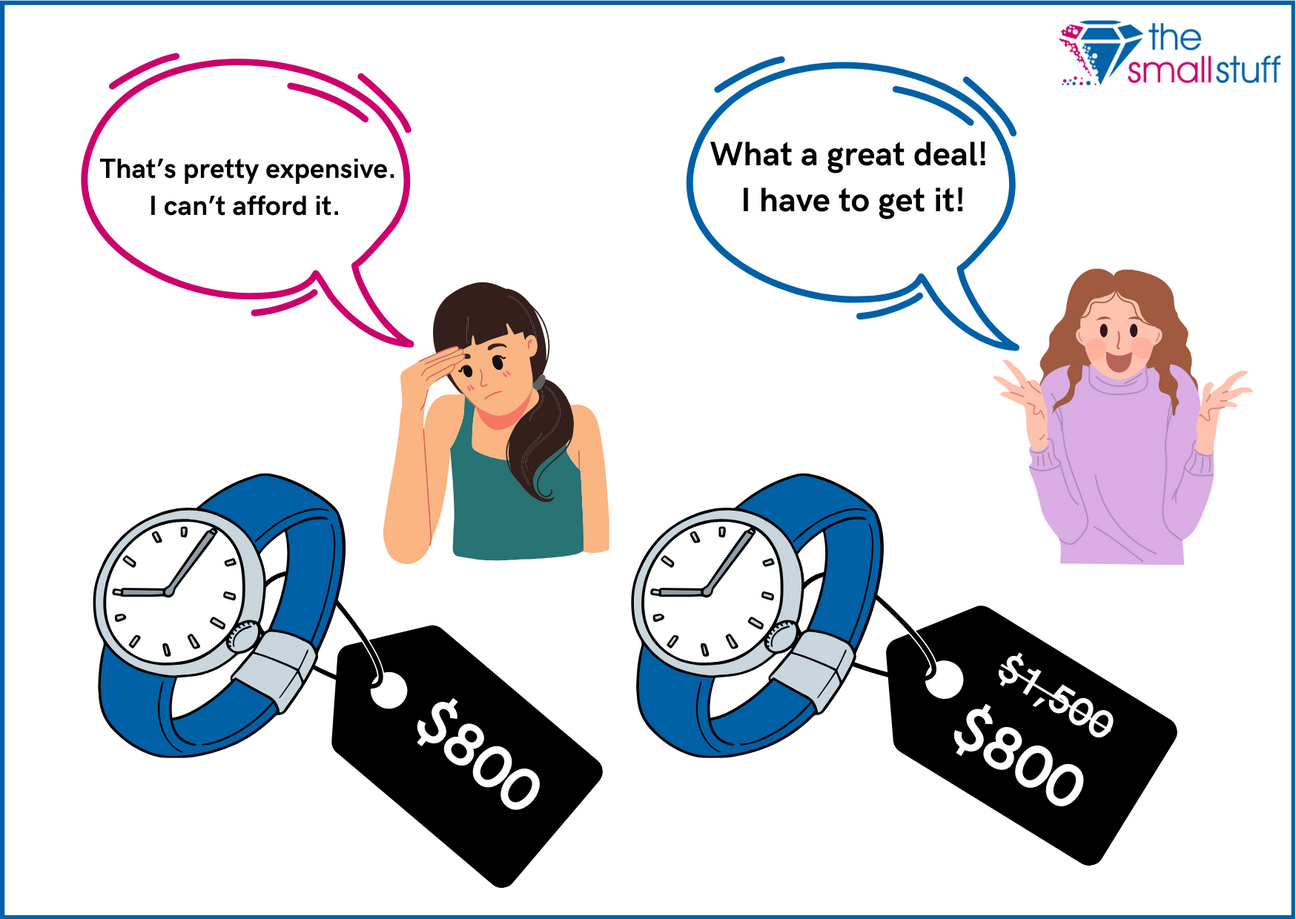What Influences Buying Decisions?
by Susannah Mathieson
How Anchoring Bias, Availability Bias, Choice Paradox, and the Speak-Easy Effect Can Shape Buyer Behaviour and Boost Your Sales Strategy
Understanding the psychology behind decision-making is a powerful tool in sales. By tapping into how the human brain processes information, sales professionals can craft strategies that resonate deeply with their prospects. Concepts like the Speak-Easy Effect, Availability Bias, Choice Paradox, and Anchoring Bias reveal how seemingly small details can significantly influence buying decisions. We explore these sales psychology principles and provide actionable tips for leveraging them to build trust, simplify choices, and guide prospects toward confident decisions.
Speak-Easy-Effect
Definition:
The phenomenon where consumers prefer simpler and easier-to-understand information, which makes communication more persuasive.
The Speak-Easy Effect emphasises our brain’s preference for simplicity and familiarity.
We are more likely to trust people who use names and words that are easy to pronounce and familiar to us.
The Science:
In a 1999 study, researchers discovered that words and names that are easier to process are judged more positively and evoke more positive emotions, even in terms of perceived truthfulness.
More research in 2007 supports this, confirming that items that are difficult to pronounce are viewed as riskier.
The Application in Sales:
It is common to see sales proposals that use complex jargon and fancy buzzwords to sound impressive. However, if the prospect has no idea what these words mean, it can create distance, a lack of trust, or a loss in credibility.
How to Use the Speakeasy Effect in Sales:
- Simplify Your Pitch: Avoid jargon and technical terms. Focus on language that your customer easily understands.
- Use Actionable Verbs: Clear, concise verbs like “achieve,” “save,” or “improve” make your message direct and compelling.
- Mirror Your Prospect’s Language: Reflect their words back to them to create familiarity and connection.

Availability Bias
Definition:
The tendency to make decisions based on the information that comes to mind most easily, often recent or vivid memories, rather than all relevant information.
The Science:
In a study, Kahneman and Tversky asked whether more words start with "k" or have "k" as the third letter. (What do you think?! 😉)
Most assumed there are more words that start with “k” because such words are easier to recall, but in reality, there are twice as many with "k" as the third letter! This highlights how availability bias leads to errors!
The Application in Sales:
In sales, this means that prospects are more likely to recall and be influenced by the details they encounter most frequently or most vividly.
The more frequently you share positive details about yourself, your company, and your offerings, the more likely stakeholders are to recall them.
How to Use Availability Bias in Sales:
- Regularly reinforce key points about your solution’s benefits and unique features. This helps you stay top-of-mind against competitors and keep your message at the forefront of their minds.
- Try exaggerating the drawbacks of NOT purchasing the product or solution (otherwise known as the “cost of inaction”). This can help customers to evaluate how much they actually need it.
- Share memorable testimonials, case studies or success stories. Present your product through impactful visuals, demonstrations, or videos. These create strong mental impressions that prospects are more likely to remember.

Choice Paradox
Definition:
Introduced by psychologist Barry Schwartz, Choice Paradox, or Overchoice, says that having too many options makes us less happy with our decisions. This happens because more choices require more mental effort, leading to decision fatigue – a worsening ability to make the right choices - and greater regret with our choices.
The Science:
In a 2000 study by psychologists Sheena Iyengar and Mark Lepper, shoppers at a food market saw 24 types of gourmet jam on display, and anyone who sampled got a $1 coupon. On another day, only six jams were displayed. While the larger display attracted more attention, shoppers who saw it were 10 times less likely to buy compared to those who saw the smaller selection. The smaller section also reported greater buying satisfaction. Yes, too much choice is a problem...but so is too little. A study found that people are less likely to buy when only one option is offered. When given a choice between two DVD players, 66% chose to buy, compared to just 9-10% when limited to a single option. This "single-option aversion" shows that consumers prefer having alternatives, though the ideal number of choices varies.
The Application in Sales:
A common reaction to the Choice Paradox is Choice Deferral, where a customer, overwhelmed by too many options, either avoids making a decision in the moment or opts for the default choice instead of comparing alternatives.
How to Use the Choice Paradox in Sales:
- Be strategic about the amount of options you offer in a proposal. Too many can cause a delay and people expect the experts (you) to help guide them in their decision-making. So, look for ways you can simplify choices for your customer.
- Before you decrease or increase the amount of options you offer, it is imperative that you have a strong understanding of your target customer.
- If you’re uncertain, try experimenting! Adjust the number of options you offer—either increasing or decreasing them—and see if it makes a difference

Anchoring Bias
Definition:
Anchoring bias plays on the principle of relativity and refers to our tendency to overemphasise the initial information we encounter, using it as a benchmark or reference point for making decisions.
The Science:
In 1974, psychologists Tversky and Kahneman tested anchoring bias by asking students to estimate the result of the same equation, with one group seeing it in descending order and the other in ascending order.
The group with the higher starting number gave a higher estimate, showing how initial anchors affect judgments, even when the correct answer is far different.
The Application in Sales:
People often rely on a reference point, or an anchor, to assess the value of a potential purchase.
In sales, the anchor is the first product we see, the first price we hear, the first piece of information given, or even the first impression of the salesperson. These anchors are what all future information is compared with and judged against.
For example, price anchoring, most effective with at least 3 pricing tiers, show us that most people gravitate toward the middle-priced option. It feels affordable compared with the most expensive choice while still seeming higher in quality than the cheapest alternative. This is quite common in Saas sales.
As another example, sometimes salespeople focus too much on the first problem a prospect mentions and assumes it is more important than anything they hear later in the conversation.
How to Use Anchoring Bias in Sales:
- Talk about the budget first to stay aligned and save time. If the client expects $85,000 but sees a proposal a bit lower, it feels better than if they expected $70,000 and then are quoted more.
- When introducing options for a purchase, start with the highest price. Use at least three pricing tiers.
- First impressions count. Plan your introduction of yourself and the product or solution carefully to ensure the first details presented create a positive tone and set high expectations for the entire buying process.
- Invest time in researching and fully understanding prospects through discovery. You can't offer valuable advice without a clear understanding of the prospect's goals and problems.

Conclusion
Sales is as much about psychology as it is about products or pricing. By applying concepts like the Speak-Easy Effect to simplify communication, Availability Bias to reinforce key messages, the Choice Paradox to refine options, and Anchoring Bias to set expectations, you can create a smoother, more persuasive sales process. These insights help position you as a trusted advisor who understands their needs and makes their decisions easier.

About the author
Susie Mathieson is the founder of the small stuff and has been working in and with sales teams for over 20 years. Her focus on motivation in a home office environment was the subject of her Masters (MBA) thesis in May 2020 and is a popular training topic amongst the small stuff clients.
The Speak-Easy Effect (learningloop.io)
9 Ways to Use Sales Psychology to Close More Deals | Proposify
https://minutehack.com/guides/sales-how-to-avoid-triggering-the-negativity-bias
https://www.simplypsychology.org/availability-heuristic.html
9 Ways to Use Sales Psychology to Close More Deals | Proposify
More Isn’t Always Better (hbr.org)
The Paradox of Choice - The Decision Lab
https://www.betterup.com/blog/anchoring-bias
9 Ways to Use Sales Psychology to Close More Deals | Proposify
Sales Psychology: 10 Psychological Triggers to Make People Buy From You (wholesaleted.com)
Sales psychology: (6 proven techniques & tips) (psdcenter.com)
Sales Psychology: A Psychological Selling Guide | Pipedrive
26 Psychological Biases to Help You Sell Better and Faster (hubspot.com)
12 Sneaky Psychological Biases That Affect How You Sell (hubspot.com)
Comments
Add a comment